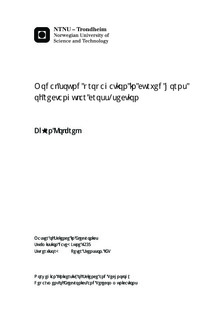Modal sound propagation in curved horns of rectangular cross-section
Master thesis
Permanent lenke
http://hdl.handle.net/11250/2370815Utgivelsesdato
2013Metadata
Vis full innførselSamlinger
Sammendrag
Wave propagation in horns can be simulated by propagating both the plane wave component and the higher order modes down the horn, as described by Kemp (2002). While this is most common for axisymmetric ducts, the method can quite easily be extended to rectangular ducts. The mode functions in this case are simple cosine functions. If the duct is quarter-symmetric, all the asymmetric modes will be zero, and the modal description is simplified. In this thesis, this simpler description is extended to the asymmetric case. The case where the horn expands in one direction and contracts in the other is also treated.If the rectangular duct is curved with a constant radius, the sound field is most easily described in cylindrical coordinates, with propagation in the angular direction. The radial mode functions will be a combination of Bessel functions. The angular wavenumber depends on the cutoff wavenumbers of the modes in both the z (transverse) direction and the radial direction.In this thesis, a thorough study of the literature concerning curved rectangular ducts is conducted. The study reveals the many complications in developing and implementing a modal model for duct bends. The two main complications are finding the roots of the so-called dispersion relation, including the difficulty of computing Bessel functions of imaginary order, and in coupling the modal description in the bend to the modal description in the straight sections. The modal radiation impedance at the mouth of the horn must also be computed. Both for the symmetric and for the asymmetric case, the expression for this impedance contains an oscillatory double integral. For low frequencies (low ka-values), the standard Matlab numerical integration routines can be used. For high frequencies, the Numerical Method of Steepest Descent is efficient, with a computation time that is independent of frequency. The Modal Propagation Method (MPM) has been implemented for both symmetric and asymmetric rectangular ducts, and compared to the Boundary Element Rayleigh Integral Method (BERIM). The MPM shows accuracy comparable to BERIM, but with considerably shorter computation time. The computation time of MPM increases as N^4, where N is the number of modes in each direction. The method has not been implemented for curved ducts or horns.
